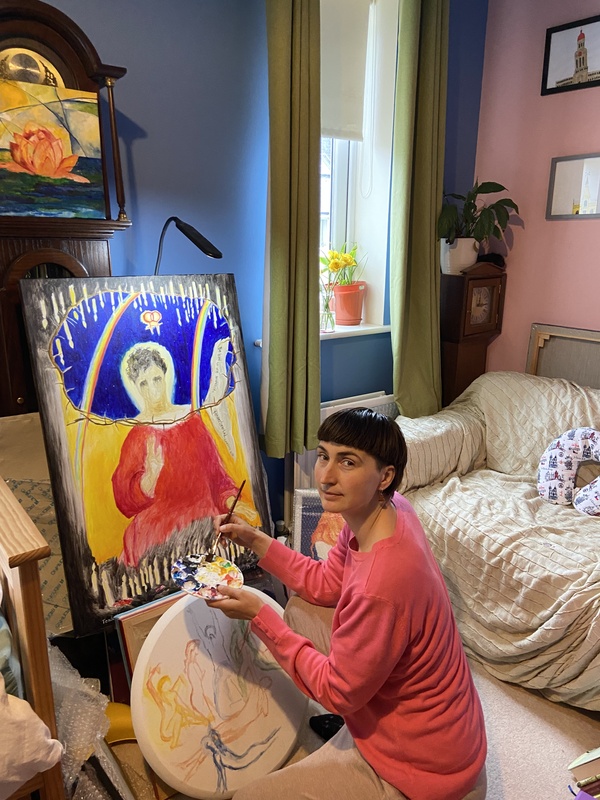Lucia Babjakova West Sussex, United Kingdom
Lucia is a Slovak-born artist who grew up in Brno, Czech Republic and relocated permanently to Shoreham-by-Sea, West Sussex, in 2010. She studied Aesthetics and Cultural Studies at Masaryk University in Brno, Czech Republic, and has exhibited around Europe in Barcelona, Prague, Brno, Florence, Wales and London.
My work encompasses abstract and representational painting with a strong colourist verve and creates meaning by using archetypes that stimulate an emotional realism. By this I mean an emotional response that connects the viewer to the image in a way that is not dependent on recognisable tropes. I am determinedly non-formulaic and my paintings are all very individual as I am trying to create images that touch people and trigger feelings, challenge concepts and draw the viewer in to really look and look again to discover the content and an evocative meaning.
I do not want to be decoration, although of course I want to exhibit and sell. My recent work has a social/political consciousness that attempts to use specific political issues to portray timeless elements of humanity like female empowerment, love, compassion, resilience, courage and hope, to make a powerful visual protest that also stimulates emotional responses relating to fundamental human experience.
I work mostly on canvas with acrylics but also do carvings from driftwood and I recently created my first whole-room installation at Colonnade Gallery in Worthing titled 'Hope and Oppression', which received strong feedback from those who were touched by it.
I am currently developing a project called Art as Protest that uses original paintings as placards in organised street protests. The idea is that art has been used as a form of protest for centuries in different ways and that art and activism have a common aim of exposing the truth and can transcend the linguistic and cultural barriers that often divide.
Art in street protest has a different energy to that of a gallery and can be more powerful than a sloganeering placard because it triggers a complex mix of emotions and self-reflection that complements outrage and anger.
The aim is to make visual art a public experience by displaying it in a specific social/political context to those who may not typically attend galleries to see protest paintings. It therefore accesses the art to a very large public group in a way that ensures many people will see and react to the paintings.

